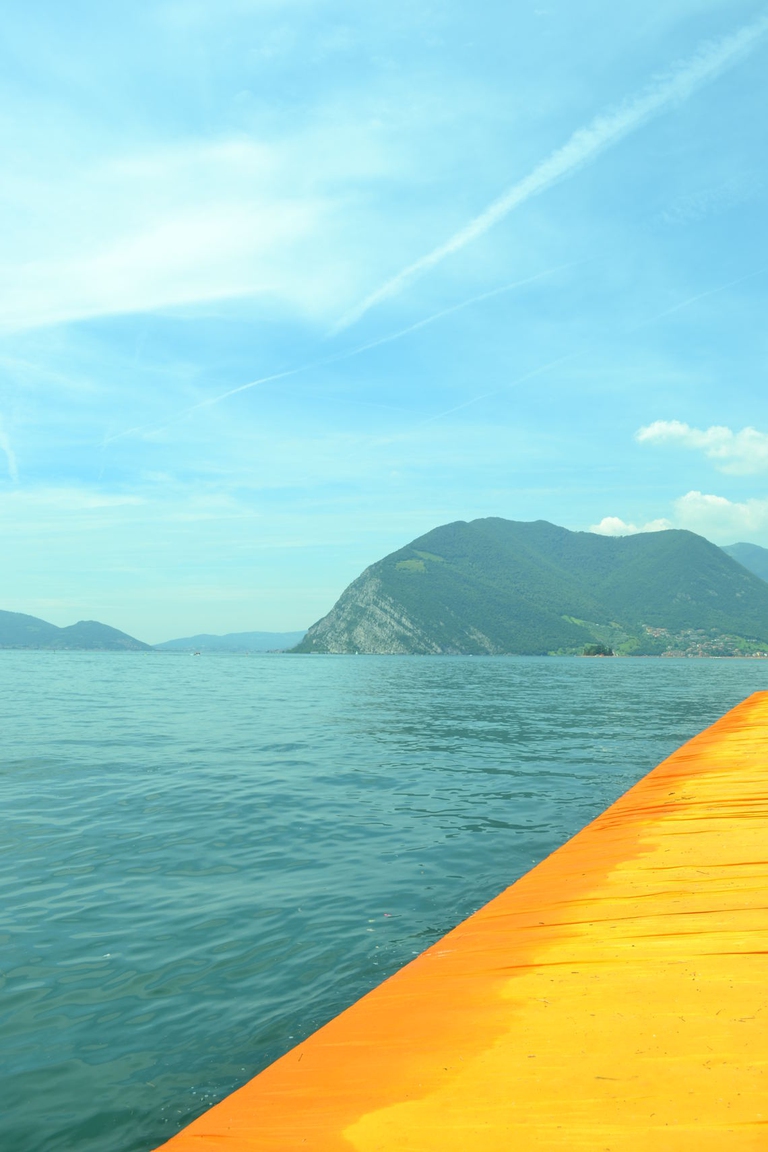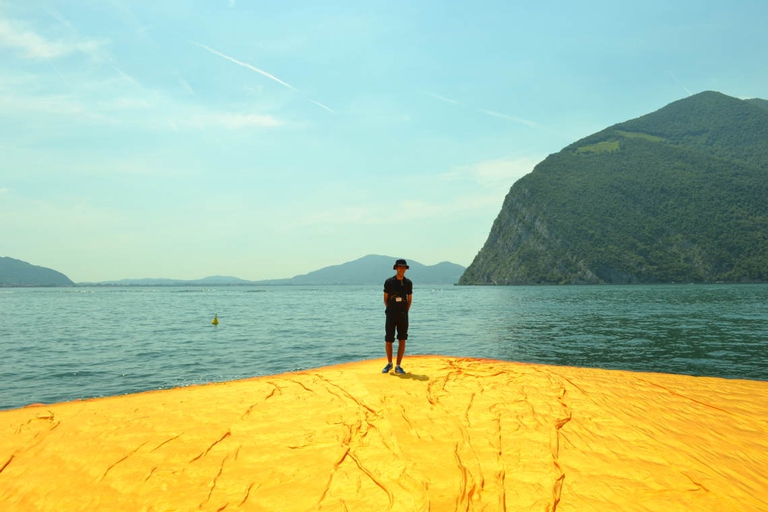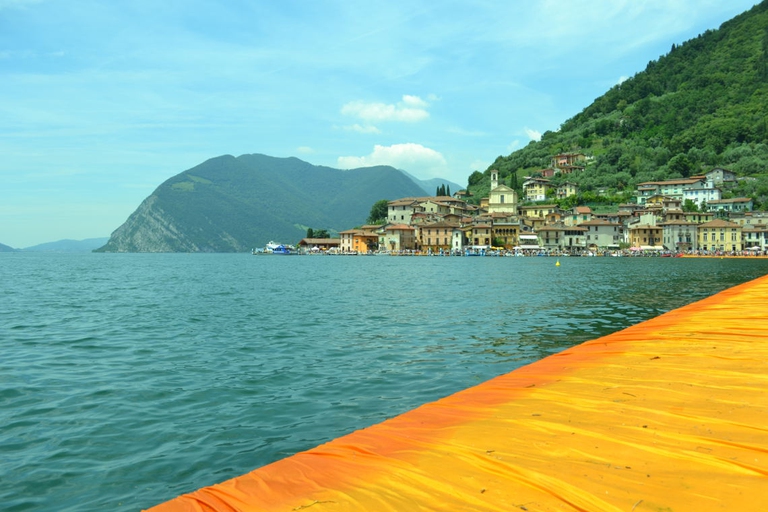
Niseko, Toya-Usu and Shiraoi are three Hokkaido destinations for travellers who want to feel close to the communities they’re visiting.
Christo’s installation The Floating Piers, is bringing Lake Iseo mountains of tourists and attention. This is a unique work of art, an exciting path that will last until the 3rd of July.
There are debates, crowds and queues but also enthusiasm, art and the meaning of The Floating Piers, Christo’s monumental installation of land art that is offering Lake Iseo fame and attention. Until 3 July it will be possible to stroll on the gangplank and reach the island of San Paolo feeling the unique emotion of walking on water.
Christo Vladimirov Yavachev, was born in Bulgaria and Jeanne-Claude Denat de Guillebon was born in Morocco, they got married and started a common artistic project that led them to become the leading figures of international land art.
The Floating Piers was conceived by the two artists in 1970. Jeanne-Claude died in 2009 but Christo continued to run the projects he planned with his wife. It was just in 2014 that Christo decided that Lake Iseo was the perfect location for The Floating Piers project.
The artists’ prime aim has always been to create spectacular and totally free artworks. Christo and Jeanne-Claude have never accepted subsidies, financing or endorsements for their public and temporary artworks. The artist’s revenues come from the sale of his original works of art to private collectors, art galleries and museums. This is probably one of the reasons why Christo is so loved and appreciated by the public. Even at Lake Iseo the artist received positive feedback: every time he appears – crossing the lake on a strange barge he says hello to the public – people show genuine enthusiasm.
The idea of walking on water, floating and following the lake is surely fascinating and it is not easy to technically realise this effect: 220,000 cubes of high-density polyethylene supported by a modular system of floating piers form a 3 km long gangplank that crosses Lake Iseo. From Sulzano people walk until Monte Isola and then to the island of San Paolo, which is completely surrounded by The Floating Piers.
The iridescent yellow fabric, which turns orange with humidity and is 100,000 square metres completely upholsters The Floating Piers, as well as the pedestrian areas of Sulzano and Peschiera Maraglio for 1.5 kilometres. This results in a clear, lit and almost hypnotic path that can be entirely trod. You can float, sit down on it, take pictures of the lake, mountains and streets.
This stretch of Lake Iseo is certainly suggestive but it doesn’t usually house such a huge number of visitors. The system created to meet the visitors’ needs is functioning but with inevitable inconveniences. The itinerary to reach The Floating Piers written in the official site of the manifestation are clear but it is still recommendable to consult the official social networks that inform you in real time of delays, changes in the programme and other useful communications.
If you go there by car, boat or train, you should take into account the small inconveniences that will disappear when you see the bright yellow fabric of the gangplank. You will be amazed by the installation as well as the context and the places that acquire a different light: Sulzano and Monte Isola have unique landscapes and views that otherwise wouldn’t have obtained visibility.
It is useless to advising against visiting The Floating Piers during the weekends or when it’s too hot: in case of extremely hot weather the authorities evacuate the gangplank and it’s not possible to know in advance how many visitors there will be. You just need to enjoy this experience with enthusiasm and patience.
Inevitable debates – mostly on the sustainability of the event – took place.
The main problem is transportation: traffic congestions in the roads leading to the lake generate more polluting emissions. Sulzano can’t be reached by car, the train service has been enhanced, but at the same time bicycles are not allowed for safety reasons. So the only means of transportation available for visitors are shuttle buses. For this reason, according to many, the event, which was promoted as sustainable, isn’t sustainable at all. The original project included the creation of 70,000 bike racks.
Lake Iseo, maybe the least known lake of northern Italy, is getting its 16 days of glory offering an incredible experience to thousands of visitors. The Floating Piers is an extraordinary artwork and mostly Christo’s gift to this territory.
Siamo anche su WhatsApp. Segui il canale ufficiale LifeGate per restare aggiornata, aggiornato sulle ultime notizie e sulle nostre attività.
![]()
Quest'opera è distribuita con Licenza Creative Commons Attribuzione - Non commerciale - Non opere derivate 4.0 Internazionale.
Niseko, Toya-Usu and Shiraoi are three Hokkaido destinations for travellers who want to feel close to the communities they’re visiting.
Disabled travellers need not fear Japan. Accessible Japan founder Josh Grisdale tells us about his commitment to opening the country’s doors to everyone.
Antarctica is becoming more accessible, so much so that tourism has seen a 53 per cent increase in the last four years. And climate change is on of the reasons people visit the frozen continent.
Alpinism has officially been added to the UNESCO Intangible Cultural Heritage (ICH) list. Its candidacy had been jointly submitted by France, Italy and Switzerland.
The word biodiversity recalls lush forests inhabited by countless animal and plant species. Life, thanks to its blind determination, blossoms in a myriad of stunning environments: from deserts and volcanoes to mountains covered up by perennial ice. The most extreme and inhospitable ecosystems can host animals and plants that adapted in the name of survival.
Not just skyscrapers: the Japanese capital is a much greener city that most people imagine. Let’s discover the best Tokyo parks and gardens from autumn to spring, and anytime in between.
Vienna will amaze you with the magnificence of its past and modernity of its services. A tour among the best sights of an environmentally-friendly city with award-winning quality of life standards.
Chile has unveiled the Patagonian Route of Parks, an incredible trail that connects 17 national parks with the aim of promoting nature conservation and community development.
Trekkers throughout the Himalayas have contributed to creating the highest garbage dump in the world. Sustainable tourism in Nepal is still absent, but sorely needed.










